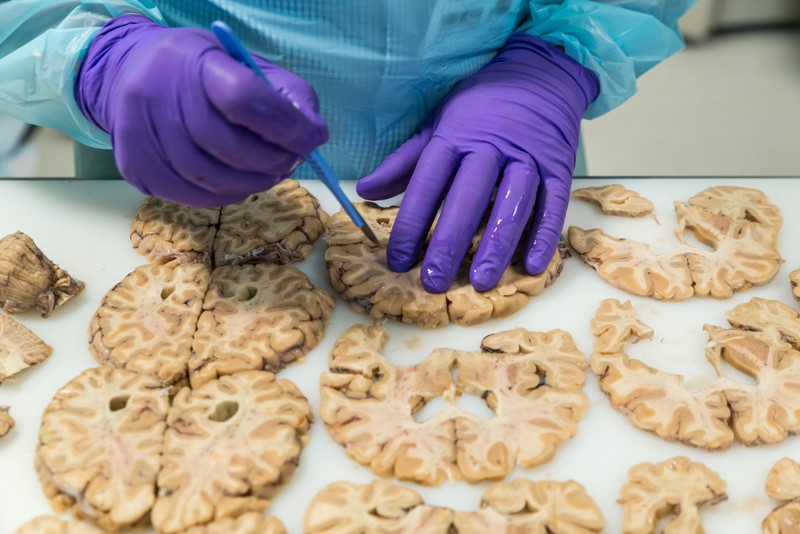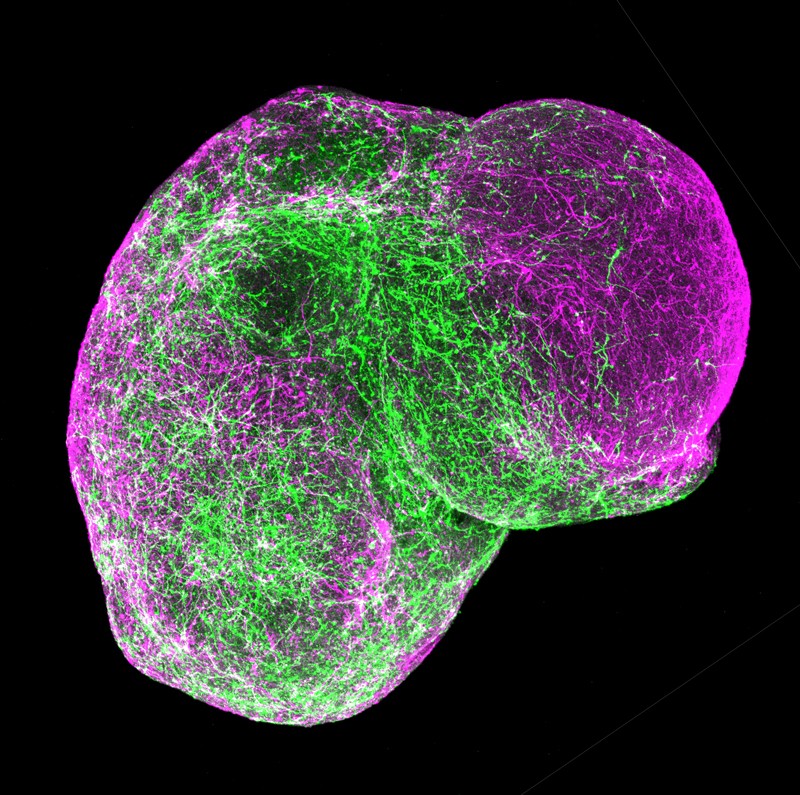Creation Interruptus
"Brain organoids can be produced much as other 3D multicellular structures resembling eye, gut, liver, kidney and other human tissues have been built. By adding appropriate signalling factors, aggregates of pluripotent stem cells (which have the ability to develop into any cell type) can differentiate and self-organize into structures that resemble certain regions of the human brain."
"Currently, if research on human tissue occurs outside a living person, only the processes of obtaining, storing, sharing and identifying the tissue fall under the regulations and guidelines that limit what interventions can be conducted on people. As brain surrogates become larger and more sophisticated, the possibility of them having capabilities akin to human sentience might become less remote. Such capacities could include being able to feel (to some degree) pleasure, pain or distress; being able to store and retrieve memories; or perhaps even having some perception of agency or awareness of self."
Nita A. Farahany, Henry T. Greely and 15 colleagues Nature.com
 |
What makes us human? What distinguishes us as humans? What is notable about our functionality? Our brains, the seat and the source of our mind, our thoughts, our emotions, our existence. The body is the carapace within which the brain sits, and where neurons send and receive messages connecting
the brain to all our other body organs, tissues, extremities, appendages. The brain knits everything together, it is the control room organizing and ensuring that everything works as it should from our eyes to our feet.
We have brains, therefore we exist. It is the source of our existence.
What precisely is it that exists in a brain that had its birth in a laboratory petri dish, separate and apart from the scaffolding of tissue, muscle and bone that we call our bodies. How does a brain become energized, what is its fuel without blood and nutritional glucose derived from food the body provides as fuel as it functions in tandem with the brain, one reliant on the other? As a vital organ, the brain has remained impervious to scientists' full understanding of its foundation of the mind and the human soul.
But modern technology and bioscience have combined to challenge nature and her designs in hopes of fully opening up the pathways of that design through experimentation to revealing the architecture and the synaptic connections of consciousness and flexibility of thought, the mechanisms of the body and the mutual dependence for existence of the two in a basic symbiosis of pure existence.
Which has led neuroscientists to create proto brains in their laboratories. It is only a matter of time before those created miniature brains awaken to consciousness. And this obvious potential creates a full-blown crisis of ethics and responsibility in the steady march toward a boundary whose consequences are unimaginable in their scope and outcomes, hitherto the stuff of science fiction but moving resolutely toward reality.
Recently a group of 17 neuroscientists and medical ethicists posed their case in the journal Nature. The work that scientists have embarked upon in laboratories around the world use stem cells to enable the growth of multicellular structures resembling human organs such as the eye, the gut, the liver and the kidney. Those very same techniques are used as well in the growth of brain "organoids"; simplified, miniaturized versions of living brain tissue.
Apart from the !eureka! moments of experiment and success, some of these organs grown from stem cells might see a future in human parts replacement by implant through surgery when patients have a need for transplants. Transplanting a brain? Taking an evolving consciousness and giving it a new home? Brain death no longer a sentence, but an opportunity to revive the failing body with a new brain? Who might that recipient turn out as? Certainly not the original occupant of the body.
Transplanting of these organoids for the present have been undertaken by brain scientists for observation and a fuller effort to comprehend where the science is leading. To understand how the brain develops, how its components interact and what can conceivably go awry in psychiatric and neurological disorders. "To ensure the success and social acceptance of this research long term, an ethical framework must be forged now", they wrote.
They posit a number of queries: Should brain organoids, or non-human creatures in which human brain cells have been installed have regulatory protection acknowledging the potential of achieving greater awareness? Should this potential lead to the creation of chimeras -- involving, as example, chimpanzees or monkeys implanted with a human brain -- to be absolutely forbidden? Should organoids or animals result from these processes who would be the legal owner?
"There are so many issues we need to think about. The best evidence that the time has come to discuss these matters is the active engagement of scientists at the front lines", observed Henry T. Greely, one of essay's drafters. Who added that generally "It's a reflex" among scientists to resist any discussions relating to hypotheticals which could conceivably place strictures on their work.
 |
Labels: Bioscience, Human Evolution, Research

0 Comments:
Post a Comment
<< Home